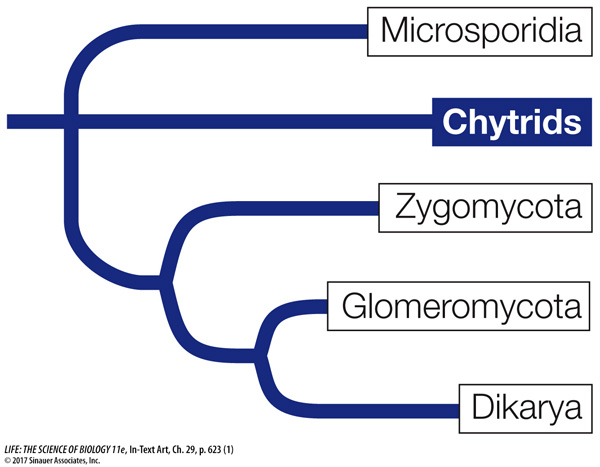Most chytrids are aquatic
The chytrids (Figure 29.14) include several distinct lineages of mostly aquatic microorganisms once classified with the protists. However, morphological evidence (cell walls that consist primarily of chitin) and molecular evidence support their classification as early-


Chytrids reproduce both sexually and asexually. Like the animals, chytrids that reproduce sexually possess flagellated gametes. The retention of this trait reflects the aquatic environment in which fungi first evolved. Chytrids are the only fungi that include species with flagella at any life cycle stage. Both the spores (called zoospores) and the gametes are flagellated (Figure 29.15A). There are two types of spores and gametes. Unlike in most fungi, one type of gamete is larger than the other, so the gametes can be distinguished as male (small gametes) and female (large gametes; see Figure 29.15A). Except for size, however, the two gametes are very similar.

Q: How is one chytrid gamete identified as male, and the other as female?
The two gametes differ in size; a male gamete is defined as the smaller of the two gametes, and the female is the larger gamete.
The chytrids are diverse in form. Some are unicellular, others have rhizoids, and still others have coenocytic hyphae. They may be parasitic (on organisms such as algae, mosquito larvae, nematodes, and amphibians) or saprobic. Some have complex mutualistic relationships with foregut-